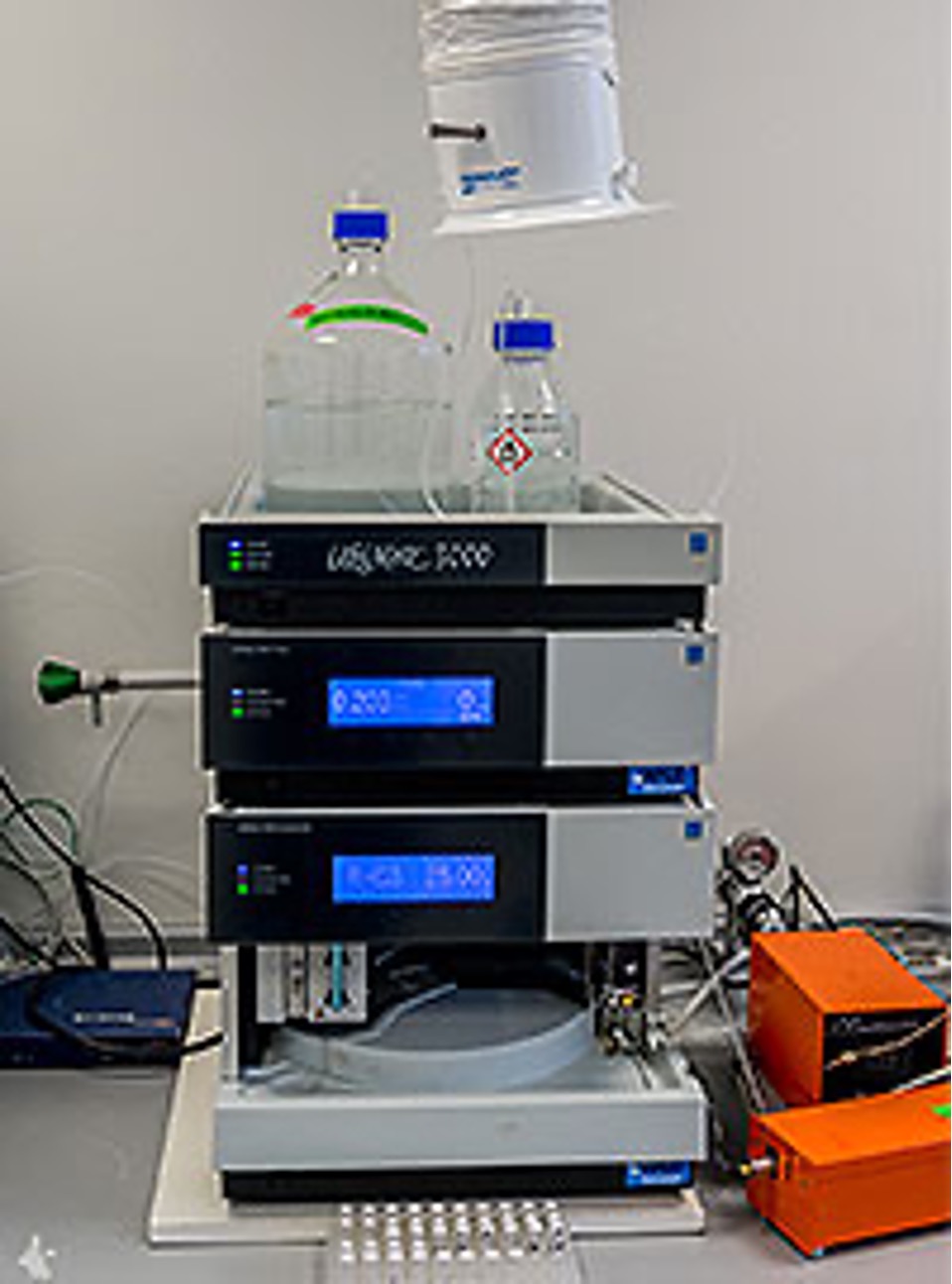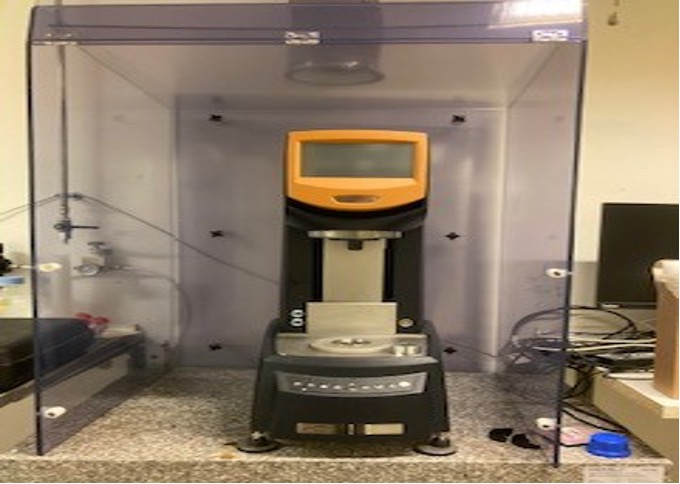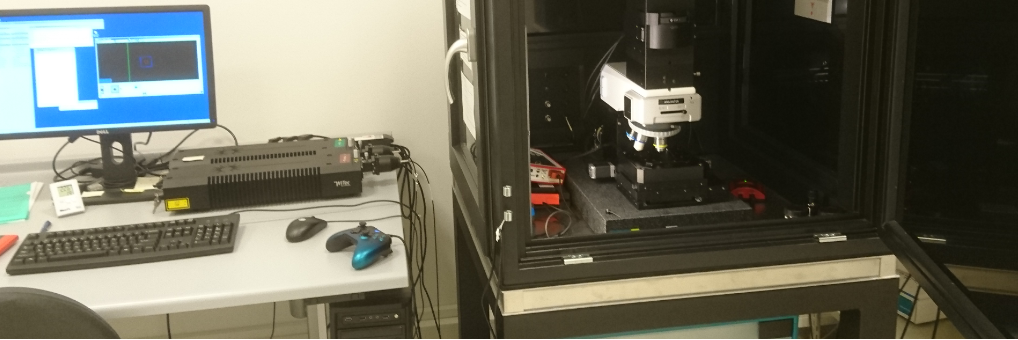Biomass science and technology facilities
The Bioresource Chemistry and Technology research group has four main types of facilities for biomass characterisation and processing: facilities for preparing and processing biomass, for chromatography, for mechanical properties, and for microscopy and spectroscopy.

Preparation and processing of biomass
The laboratory contains standard equipment such as a large range of glass and plastic ware, benchtop centrifuge, weights (down to 0.1 mg), fume hoods and worktables. A collection of chemicals is also available.
A range of processing possibilities are available, i.e. extraction, impregnation, mixing, hydrothermal pretreatment, incubation, for example for enzymatic treatment. Fabrication of fibreboards and fuel pellets using a hot-press + inserts are possible. Sonication and extrusion equipment is also available

The laboratory contains aqueous solution based HPLC’s from Dionex.
- Sugars and oligosaccharides can be analyzed by an ICS5000 HPAEC (High Performance Anion-Exchange Chromatograph).
- Sugars, organic acids, alcohols etc. can be analyzed by an Ultimate 3000, or a Summit UHPLC system.
- In addition to these liquid phases systems the laboratory has a Varian 3900 gas phase chromatograph GC-MS (Saturn 2000 MS) with MS detection.
The laboratory also has facilities for protein characterization.
- Amino acid analysis: Giving the quantification of the concentration of protein/peptide/enzyme as well as the relative amino acid composition, analyzed by Waters module-based equipment based on cation-exchange.
- Protein Sequencing: Giving the amino acid sequence from the free N-terminal of protein/peptide/enzyme, analyzed by Shimadzu Isocratic Protein Sequencer, PPSQ-51A.

A Shimadzu testing machine is available for compression and tensile testing. An advanced rheometer is also available.

The laboratory contains a range of spectroscopic analysis equipment, which can be used for liquid as well as solid samples (e.g. plant fibres, wood, powders, polymers). Instruments include Raman microscope, IR microscope and UV-VIS spectrometer.
- Branson ULTRASONIC DISINTEGRATOR MODEL 450 W
Digital ultrasonic sonifier used for the preparation and dispersion of cellulose nanofiber. Also has a variety of uses and comes with different types of horns and disrupter units for small volumes. - BWTech i-Raman EX dispersive spectrometer (1064 nm laser excitation) equipped with a microscope
The instrument is well suited for samples that show problematic autofluorescence. However, the spectral resolution is only approximately 10 cm-1 covering the range 2000-200 cm-1. - Dionex ASE 350 Accelerated Solvent Extractor
The ASE 350 is built for automated extractions of biomass. It is applied with a 10 bar N2 overpressure used as a carrier gas. We can go as high as 200°C and we can control holding times and combinations of solvents. It can be used to study content of extractives in different biomasses, where we can use various solvents (organic solvents, dilute acids, alkaline, water).
It can also be used for various biomass pretreatment methods (organosolve, hydrothermal, etc.). We have different sizes of extraction cells and different alloys as well.
- Dionex ICS5000 HPAEC (High Performance Anion-Exchange Chromatograph)
The ICS-5000 system is equipped with a PAD detector (Dionex, Sunnyvale, CA, USA) and a CarboPac PA1 column (2 x 50 mm guard column followed by a 2 x 250 mm analytical column).
This setup allows for chromatographic analysis of oxidized oligosaccharides (aldonic acids). This can be modified to analyse native monosaccharides for, i.e. biomass composition analysis.
- Dionex Ultimate 3000 HPLC
The Ultimate 3000 HPLC (Dionex, Germering, Germany) is equipped with a RI-101 refractive index detector (Shodex, Japan), a UV detector at 210 nm (Dionex) and a Phenomenex Rezex ROA column for the analysis of carbohydrates, i.e. glucose, mannose, xylose, cellobiose as well as products relevant for fermentation analysis, such as lactate, ethanol, acetate and glycerol. - Dusatech Thermokinetic Mixer for plastics compounding
Used for blending of plastics for applications such as colour concentrates and wood fiber plastic composites (WPC). Batch compounder with the capacity to blend plastics with suitable materials from about 1 to 2.5 kg. - High throughput screening platform
This platform integrates an automatic biomass grinding and dispensing system, a pressurized pretreatment setup, enzymatic saccharification and monomeric sugar determination utilities in 96-well plate format. It enables rapid high throughput screening of primarily lignocellulosic biomasses for assessing their recalcitrance and measuring their energy potential.
This platform can also be applied to assist biomass sample preparation and pretreatment in high throughput manner for various application purposes. The platform is still available, but no longer maintained. - HOT PRESS (OBEL-P-PRODUCTS, Copenhagen, Denmark)
The hot press has two plates (upper and lower) that can apply pressure to compress substance between them. The two plates can be heated to specific temperature (maximum 400℃) and the press is controlled hydraulically with maximum 300 bar (764 kN).
The hot press is normally used to compress wood material or make biomass briquettes when equipped with a custom-made die and piston. FOSS Near Infrared Instrument - Leica Rotary Microtome
The Leica Rotary Microtome is a motorized microtome, for the preparation of very thin sample sections. These can be obtained in the range of 0.5 – 100 µm thickness. The cutting speed can be adjusted. For optimal cutting angles the sample holder can be rotated by up to 8° in the horizontal and vertical directions relative to the knife edge. The knifes are made of stainless steel. - Low field Bruker NMR mq20 spectrometer
The low-field NMR spectrometer is equipped with a 0.47 T permanent magnet and can be used to detect hydrogen nuclei in liquid water. By standard 1D-NMR measurements, the dynamics of water in different confined environments can be detected.
More information can be gained from available T1T2 correlation spectroscopy, which enables the distinction of effects on the water dynamics from pore size and chemical interactions. - Metrohm Titrino Plus Karl-Fischer titration unit equipped with a Thermoprep oven for precise water quantification of wet and solid samples.
- TA Instruments HR-30 Discovery Hybrid Rheometer equipped with temperature regulation and a range of geometries for investigating various rheological properties.
- Manual sliding microtome with disposable blades. WSL mikrotom
The lab-microtome can cut micro-sections for microscopic investigations. The sample holder can be rotated around both axes in the vertical plane. The knife holder is designed for disposable blades and the angles relative to the upper face of the sample and the sample movement during cutting can be adjusted. The height of the sample holder can be mechanically adjusted by a micrometer screw. Holder for wood cores available. - PARR reactors, large + small
For pressurised reactions, the lab has three stainless steel and one hastelloy Parr reactors of 100 ml. Maximum pressure is 200 bar and temperature 350º C. In addition, there is a stainless steel reactor of 1 L, equipped with a stirrer, jacket heater, and a reactor controller (4848), maximum pressure is 345 bar and temperature 500ºC. - Perkin Elmer FT-IR Spectrum 3 instrument with microscope
The instrument can be set up with a diamond ATR unit or a photoacoustic detector. The microscope can be used in transmission, reflectance, or micro-ATR mapping mode. A micro-ATR imaging module is also available. - Protein characterization
Amino acid analysis: Giving the quantification of the concentration of protein/peptide/enzyme as well as the relative amino acid composition, analyzed by Waters module based equipment based on cation-exchange.
Protein Sequencing: Giving the amino acid sequence from the free N-terminal of protein/peptide/enzyme, analyzed by Shimadzu Isocratic Protein Sequencer, PPSQ-51A.
- Shimadzu AGS-X Autograph
The Shimadzu AGS-X instrument can be used for a broad range of material testing. 20 N, 100 N, 1kN and 10 kN load cells are available. The instrument can be fitted with several different types of tensile grips and fixtures, three-point-bending jig as well as compression plates.
- SpectraMax® i3 Multi-Mode Microplate Reader
For measuring absorbance (wavelength range: 230–1000 nm), fluorescence (wavelength range: 250–850 nm), and/or luminescence (wavelength range: 300–850 nm). A combination of Xenon flash lamp and LEDs provides high signal strength and sensitivity.
Operates with a variety of micro titer plates. There are options for heating and shaking. There are many possibilities for supplementing the apparatus with additional measures (e.g. western blot, imaging, nano drop, cuvette holders, etc.).
- Thermo Scientific Microm HM 450 microtome
The sliding microtome is equipped with stainless steel knifes. The microtome is semi-automatic meaning that the sample is automatically moved into a position corresponding to the selected thickness when the knife is returned to the starting position, but the cutting is done by hand as this microtome has no motor. - UV-VIS spectrometer
Ocean optics DH-2000-BAL, UV-VIS-NIR
Hach spectrophotometer 1900 - VIS-NIR instrument
The instrument measures in reflectance mode in the wavelength range from 400 to 2500 nm. Several different sample cup sizes and shapes are available. All have quartz windows. The instrument is old and data has to be transferred using a 3.5” diskette. - WITec alpha300R Confocal Raman Microscope
The Raman microscope is equipped with two lasers: 532 and 785 nm, each with a dedicated spectrometer. Several different types of objectives are available, making it possible to perform imaging with down to about 300 nm spatial resolution. The instrument is affiliated with CAB (Center for Advanced Bioimaging).
